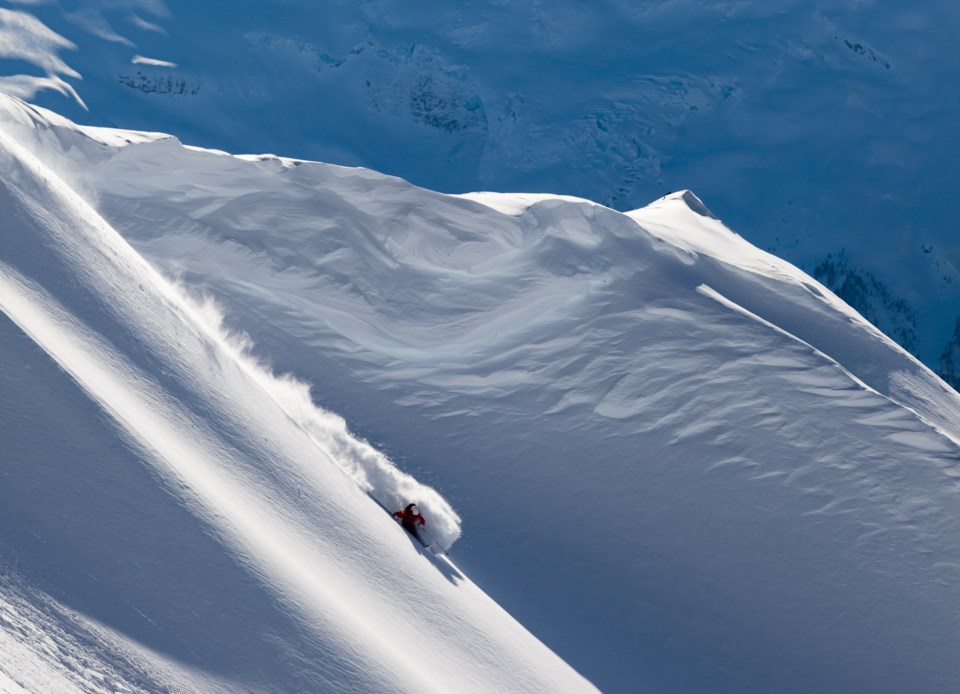Like most media folks who go looking for paycheques in the outdoor industry, my career began behind a camera more than a keyboard. Photography and action sports go hand in hand, and if you want to document your adventures, photos are the proof.
I never graduated into the annals of the Whistler photography greats, but I did manage to get my work published in some ski and mountain bike magazines over the years. I even received a few cheques in the mail, though they rarely covered the time, effort and equipment I had to invest to get the photos in the first place. But that didn’t matter. I was building a name for myself, always willing to cart the extra-heavy bag of cameras, lenses and lighting gear. A few days were winners, coming home with a slew of shots I couldn’t wait to upload and edit. Many other days were a complete bust with poor light, poor snow (or both), with little to show for a day of hauling gear and freezing while waiting for the good light.
Just like overzealous skiers in search of pow, that desire to come home with the goods can cloud a photographer’s judgment. Not the wise ones, of course. They’ve seen enough close calls or injuries in the backcountry to know better. It’s the young, hungry, and impatient photographers that get themselves into trouble, mostly.
It was around 2010 when I got myself into trouble. I was on a heli drop on Rainbow Mountain with four other friends, all accomplished skiers and snowboarders. They were excited to have a photographer along in their group, since shooting your own footage on phones and compact digital cameras back then didn’t really yield the best-quality images.
After the quick two- to three-minute heli ride, we scoped our first couloir. The light was a bit flat, but I figured it was a good test run so I could nail the shot once the sun poked out. I had my skis off and my tripod out, checking the framing and focus. I was aware of the cornice, but considered I had ample support from where I was standing. The frame wasn’t quite right, so I moved a half-foot closer to the edge. The frame was still a bit obstructed, so I nudged another half-foot closer. Perfect.
The next sound I heard was a few tonnes of solid snow shearing in two as I plummeted into the couloir. The rather large overhanging cornice had collapsed, triggering an avalanche and carrying me with it. My camera was still around my neck and I tried to hold onto it with at least one hand as I picked up speed in the slide, the sound now a large rumble. My boot clipped an obstruction in the fray, spinning me around and sending me headfirst on my back into the lower half of the couloir.
I still had one hand on the camera, praying I might make it out of this with my most prized possession. Sliding backwards and headfirst, I dropped off a steeper part of the chute and a wall of snow washed over me. The rumbling around me was muffled by the engulfing snow, everything around me an eerie, middle grey. Snow was forced down my airway, the abrasive snow crystals painfully blocking any attempt at breathing. I finally let go of the camera and frantically clawed at my face hoping I could make an air pocket in the inevitable burial that awaited.
Then, all of a sudden I popped out into the sunshine. My head surfaced and I coughed up the snow obstructing my airway, my only injury a dislocated shoulder. The camera was nowhere to be seen and my friends were slowly making their way around down to me.
We spent the rest of the day digging for my camera in the rubble, to no avail. I’d escaped the avalanche relatively injury-free, but with an upcoming surgery; my uninsured camera would end up spending the next few months in the snowpack.
When I finally retrieved the camera, the lens and body were water damaged beyond repair. The only surviving part was the memory card. I uploaded the photos and realized the shot I was framing wasn’t even that spectacular, and my hungry photographer overstoke had risked my life for this mediocre image.
Whether you’re chasing the best pow skiing or just wanting to come home with the best photos of your day, impatient decisions can have disastrous knock-on effects. The professionals never seem to be in a haphazard rush when they’re shooting in the backcountry, and neither should we. Take the extra moment to consider the risk, regardless of how awesome that photo could turn out to be.
Vince Shuley leaves professional photography to the professionals these days. For questions, comments or suggestions for The Outsider, email [email protected] or Instagram @whis_vince.




